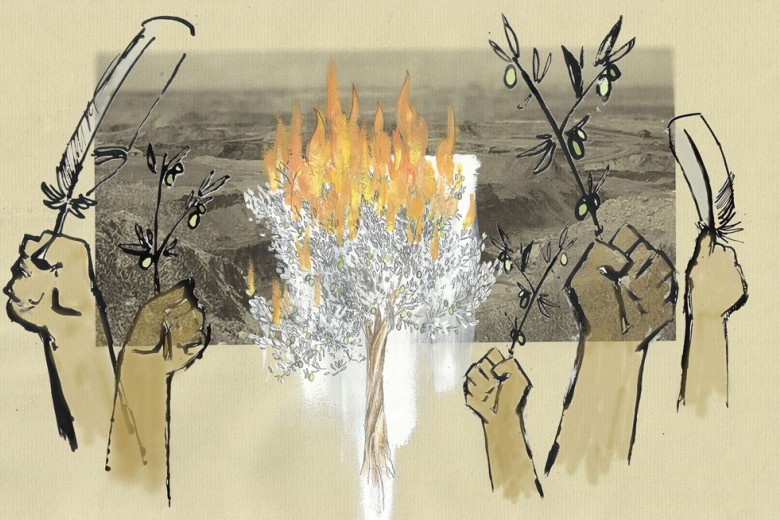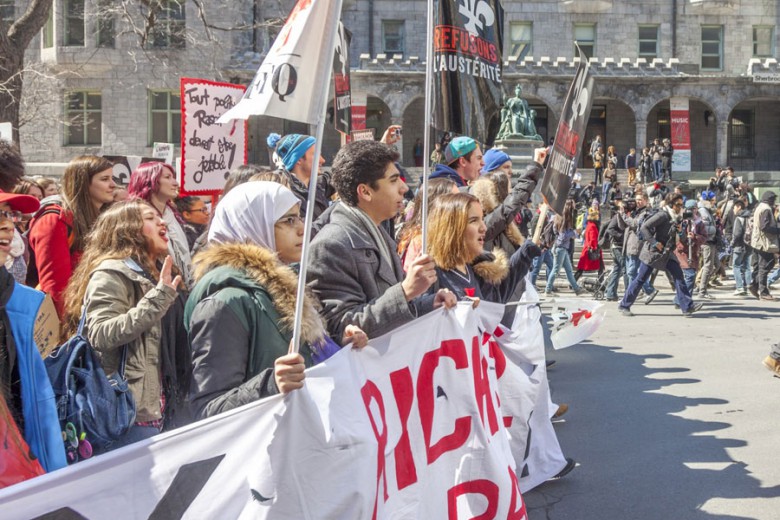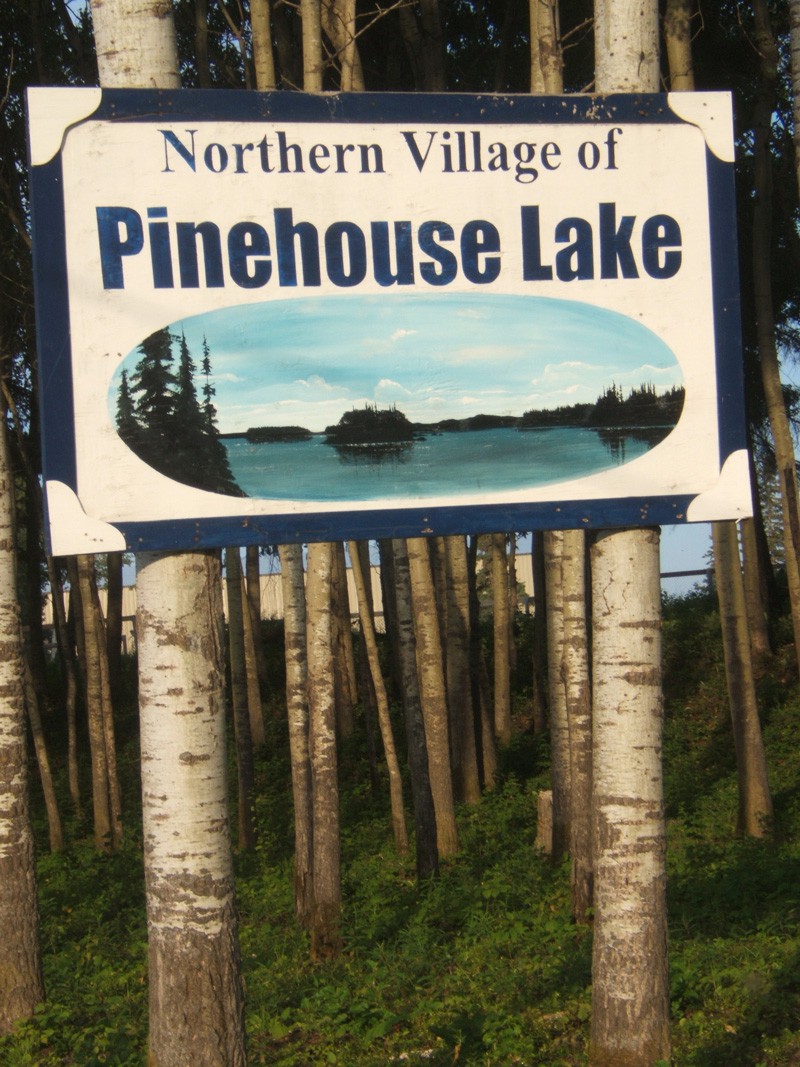
Pinehouse residents Fred Pederson, John Smerek, and Dale Smith all feel like they have been wearing targets on their backs ever since their names appeared at the top of a list of 39 plaintiffs in a lawsuit filed in June. The lawsuit challenges what plaintiffs consider to be an odious collaboration agreement between the Northern Village of Pinehouse and the Kineepik Métis Local on one side, and uranium mining giants Cameco and Areva on the other. And most of the village leaders who are promoting the nuclear agenda aren’t happy about the trio’s stubborn opposition.
Pinehouse is an isolated village of just under 1,000 people, primarily Métis in origin, about 500 kilometres north of Saskatoon. Although it is difficult to obtain an accurate current figure, in 2006 the unemployment rate was 22 per cent. Besides traditional fishing, trapping, and outfitting jobs, and some in the service sector, the nearby uranium mine at Key Lake is increasingly the only place in town where young people can find employment. Over the past few years, the village’s leadership has further tied Pinehouse’s future to the uranium industry by channelling all economic development initiatives toward uranium development.
Gag order gone wrong
At a public village meeting on November 13, 2012, a seemingly innocuous document was distributed to attendees. Titled “Summary of the Collaboration Agreement Term Sheet made among Cameco Corporation, Areva Resources Canada Inc. and Pinehouse,” it laid out the terms of an agreement to be signed sometime before December 31. A cursory review raised deep concerns among residents, many of whom saw the meeting as an attempt by village leadership to slip the document under the radar while making feeble gestures toward public consultation. Residents like Smerek and Smith asked questions at the meeting but were quickly rebuffed by officials.
In the days that followed, the implications of the term sheet became apparent. In addition to direct cash payments of (at that time) unspecified amounts, the community was promised a number of vaguely worded opportunities for workforce and business development, community engagement, and environmental stewardship. In exchange, the village would commit to supporting all future Cameco and Areva initiatives and would agree to “not make statements or say things in public or to any government, business or agency that opposes Cameco/Areva’s mining operations [and] make reasonable efforts to ensure Pinehouse members do not say or do anything that interferes with or delays Cameco/Areva’s mining.” These terms appeared to guarantee the uranium companies carte blanche over future development in the Pinehouse region and, even more disturbing, impose a gag order on every individual living there.
At the same time, despite being formally asked to do so in writing, the village administration refused to share the text of the actual collaboration agreement with its citizens and refused to delay its signing until citizens had an opportunity to see it. A wave of public protest ensued, reaching internet and media audiences around the world. As the most outraged citizens in the community mobilized to stop the agreement, officials rushed ahead with the timeline and signed it with great fanfare on December 12.
In the final version of the agreement, certain aspects of the draft were modified to placate concerned members of the public, including removal of the egregious gag order provisions. But another party appeared in the final text: Kineepik Métis Local Inc., which had contracted Vancouver consultant Terry Tobias to update a land use study that mapped traditional fishing, trapping, and other resource utilization around Pinehouse. As it turned out, Kineepik’s executive agreed to share that information, received from Tobias at the end of 2012, with Cameco and Areva – without consulting community members. In doing so, they created the potential for industry to negotiate compensation for encroachments upon, or attempt to extinguish traditional land use in, Métis territories marked for uranium mining or radioactive waste disposal.
The final agreement guarantees the Pinehouse Village Trust an initial payment of $1 million, another $500,000 after the Cameco-Areva Cigar Lake mine begins production, an additional $500,000 when Cameco’s Millennium mine extension begins construction, and further payments based on annual uranium production benchmarks. As Dale Smith, a commercial fisherman, said on La Ronge’s MBC radio: “They bought Pinehouse outright.”
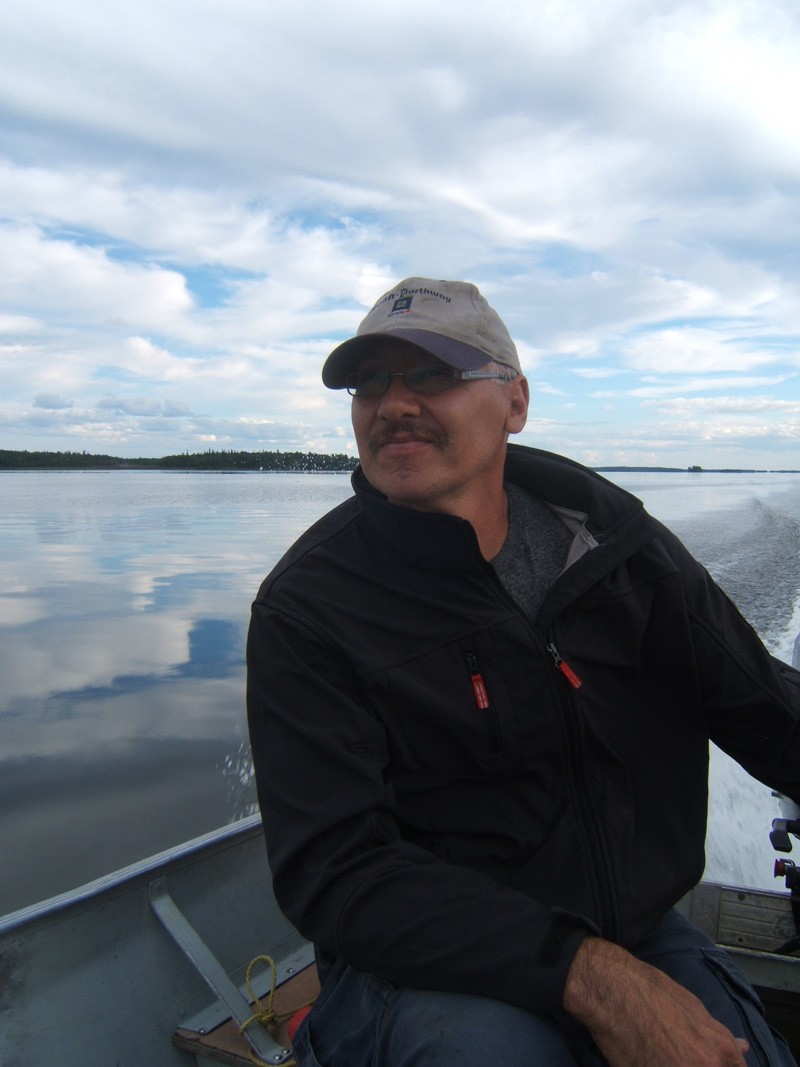
The collaboration agreement’s impact is being felt outside Pinehouse, too. Candyce Paul, a member of the English River First Nation, 100 kilometres away, says, “Cameco, Areva are busy sewing up approval for all future projects. Both the Pinehouse and English River collaboration agreements [English River’s was signed May 31, 2013] have these administrations locked into supporting everything [the uranium companies] do. With all the legislated changes depleting environmental protection, this compromises the region’s ability to ensure that our land, water, and health are protected over the long term.”
The domination matrix
The Pinehouse leadership is dominated by just a few individuals. Three men in particular have situated themselves at the top of the heap. Greg Ross, a businessman with a checkered success rate, moved to Pinehouse in 1977 to fill a position as the Co-op store manager. He has cultivated a circle of influence and been elected several times to village council. Cousins Mike and Vince Natomagan are among the younger proteges that Ross – currently a village councillor – has supported in his business and political endeavours. Vince Natomagan is a former councillor, while Mike Natomagan is currently mayor.
In 1998, the Village of Pinehouse established a municipally owned development corporation to promote economic activity called Pinehouse Business North (PBN). PBN languished until 2007 when the Village asked hotelkeeper John Smerek to draw on his construction contract expertise and develop a revitalized business plan. His efforts were apparently successful: PBN signed several lucrative contracts with Cameco to provide the general labour force at its Key Lake uranium mine.
But the relationship between Smerek and the Village soured later that year when several councillors appointed themselves to well-paid positions in PBN’s top management. Mike Natomagan, elected mayor in 2005, became PBN’s new president – and received a generous salary. The new salary regime also directly benefited then councillor Vince Natomagan, PBN’s general manager from 2007 to 2010, and former mayor Greg Ross, PBN’s CEO from 2007 to 2012 and still one of its directors. Smerek considered these appointments a conflict of interest and quit in protest. “Before I even started, I did make it clear that if any one of them on council – elected officials – appoint themselves as executives on Pinehouse Business North for pay, I would be leaving,” he explains.
Because of top-heavy administration and poor management, PBN fell on hard times once again. Despite millions of dollars in service contracts at the Key Lake mine over the previous years, PBN had somehow generated a $294,848 deficit in 2009. Briarpatch has made persistent, and so far unsuccessful, attempts under Freedom of Information legislation to obtain financial statements for PBN from the Village, which would clarify where the contract earnings since 2007 were spent and how the corporation has managed to turn things around since 2010. Some locals suspect that new dollars came from the uranium and nuclear industries in exchange for Village support for expanded nuclear development at Pinehouse. Smerek says, “We still don’t have financial records. Rumours in this community usually stand pretty true, but I can’t live by a rumour. We need the facts of it.”
In an attempt to introduce more accountability into village administration, Dale Smith and Fred Pederson, a Cree Elder, decided to run in the 2012 municipal election. Serious irregularities were noticed in the conduct of the polls and reported to Saskatchewan’s Ministry of Government Relations. Officials refused to intervene. Despite grave reservations about the integrity of the election results, most of the old guard returned to office. Pederson sums up the situation: “We don’t have democracy here anymore.”
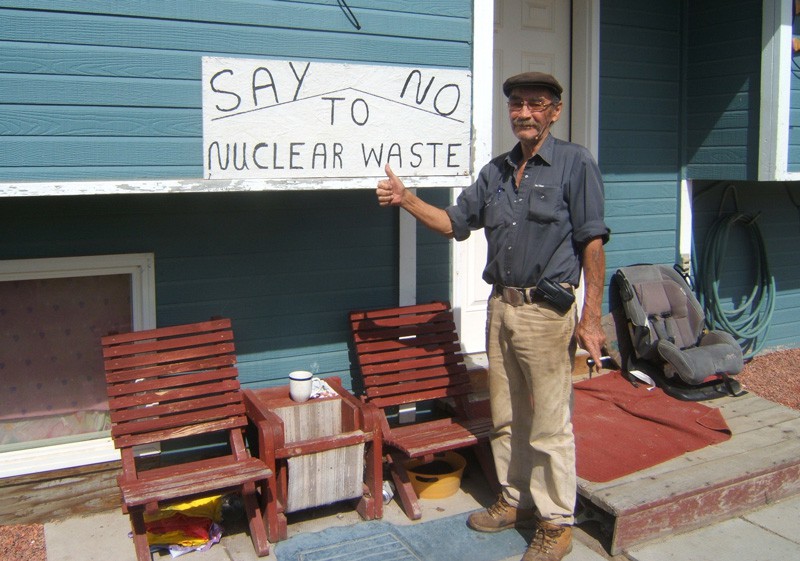
A similar concentration of power exists in the Kineepik Métis Local, which can be confused with another legal entity of a similar name. Kineepik Local 9 has not been formally registered with Métis Nation – Saskatchewan and has not held regular membership meetings or elections for its council in at least five years, according to Smith. On the other hand, Kineepik Métis Local Inc. is a private corporation whose shareholders are not known. It is known, however, that Mike Natomagan is president and Vince Natomagan is executive director. And it is the corporation that has signed the collaboration agreement, claiming to represent the entire Pinehouse Métis population. Smith explains, “When I saw they got incorporated as a business, I knew what they were trying to do.”
Then there is the Pinehouse Community Liaison Committee of the Nuclear Waste Management Organization (NWMO), chaired by Vince Natomagan. NWMO operates on behalf of the nuclear industry and is mandated to find a storage site for thousands of tonnes of highly radioactive waste created by eastern nuclear power reactors. NWMO and the Village began discussions in 2009 to explore the possibility of establishing a nuclear waste repository as an economic development opportunity. It was the shocking news that three northern Saskatchewan communities were being considered as sites for nuclear waste storage that sparked the Committee for Future Generations’ 800-kilometre walk from Pinehouse to Regina in the summer of 2011.
Ultimately, the nexus of a few key Pinehouse leaders in a few key community organizations has served to push the corporate nuclear agenda ahead despite community opposition. In public statements, village leaders have always claimed that it is the people of Pinehouse who are in the driver’s seat in negotiating that agenda. But the signing of the collaboration agreement in December 2012 made it painfully obvious that it is the large uranium companies who have the foot on the accelerator.
A legal challenge brings new hope
Opponents to the collaboration agreement appeared to be stymied, but in December 2012, the Kowalchuk Law Office in Regina, which had been closely watching developments, offered to act on behalf of those concerned about the consequences of the agreement. After months of research and preparation, on June 24, 2013, Larry Kowalchuk registered a statement of claim in the Court of Queen’s Bench, Prince Albert, on behalf of Smerek, Smith, and Pederson, backed by three dozen other plaintiffs across Canada. The suit is filed against Areva, Cameco, Northern Village of Pinehouse, Kineepik Métis Local Inc., the Governments of Saskatchewan and Canada, as well as Mike Natomagan and Vince Natomagan as private individuals.
The plaintiffs allege that uranium mining and associated activities will have a detrimental effect on public health and the environment not just at Pinehouse but over a much wider territory. They claim that mining operations “violate the citizens’ rights to the use of the land and their ability to use the land safely, in areas such as trapping, hunting, agriculture and other traditional and historical land use by residents integral to their distinctive culture.” They also dispute the claims of the Pinehouse leadership that collaboration with the uranium industry, past or present, has “resulted in the development of economic self-sufficiency separate and apart from an unhealthy dependence upon the defendant companies.”
The federal and provincial governments are named as co-defendants in the case because of violations of the Canadian Constitution, including Aboriginal and treaty rights in Section 35, and neglecting their duty to consult pursuant to the Charter of Rights and the United Nations Declaration on the Rights of Indigenous Peoples. Mike Natomagan and Vince Natomagan are singled out as being in a conflict of interest because they “have received and will receive direct and indirect personal economic benefits from the defendant companies, none of which were disclosed prior to the signing of the Collaboration Agreement and which will increase as a result.” The plaintiffs also claim that Vince has personally “harassed, intimidated and publicly criticized” some of them.
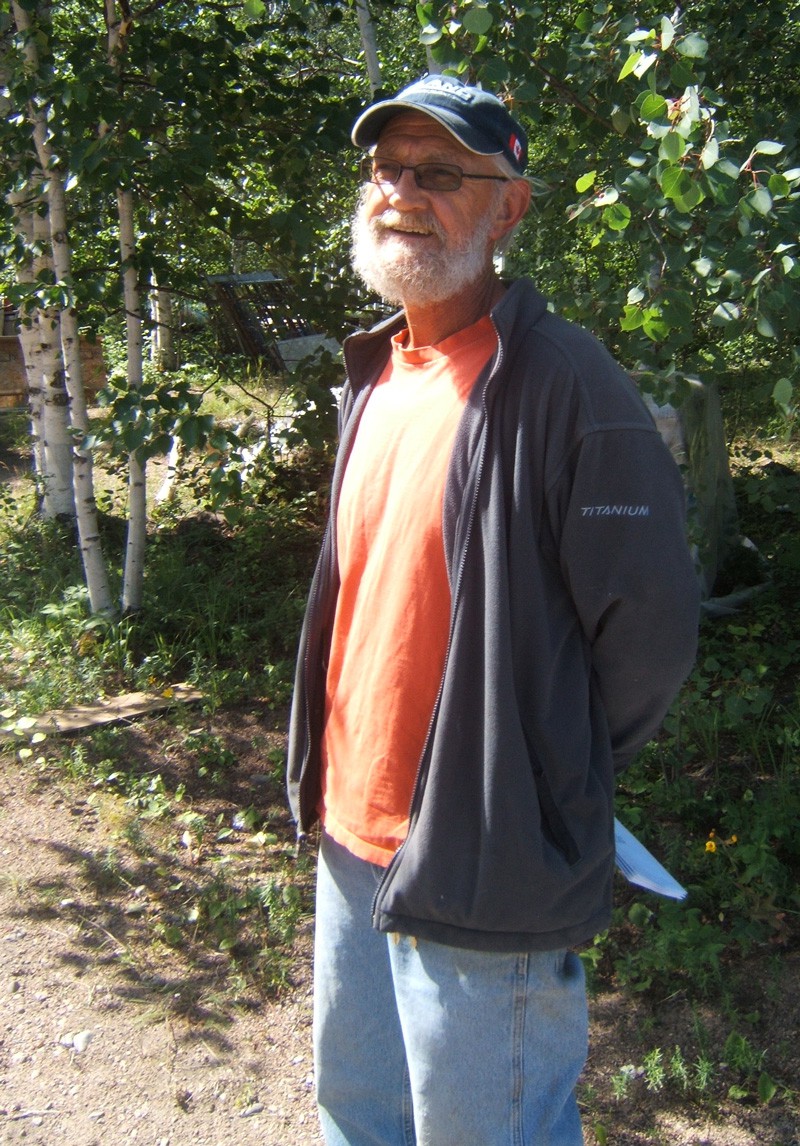
The lawsuit alleges numerous other violations of statutory, constitutional, contract, and tort law. Consequently, the plaintiffs ask the Court to order the collaboration agreement null and void, to award sufficient funds to do an independent study on the effects of the uranium-nuclear chain on human health and the ecology, and to order an immediate halt to the uranium industry’s implementation of its development agenda as represented by the terms of the agreement.
Scratching each other’s backs
The uranium-nuclear axis has curried immense influence and support for its agenda within the village elite. According to the collaboration agreement, the industry, the Village, and Kineepik are “achieving a long-term mutually beneficial relationship.” In the process, Pinehouse has become a company town whose economic future is inextricably tied to the success or failure of the uranium industry. In return for large cash payments and promises of more, the local leadership seems prepared to sweep under the carpet any concerns about environmental sustainability or the health of its citizens.
Smerek and Pederson remain outwardly optimistic despite the difficulties they face daily. But Smith expresses a deep sense of foreboding about how some in the community might react to their opposition: “We knew when we went into this court case we were signing our lives away, what it means to live in this town, in this community.”
The Committee for Future Generations continues its active resistance to uranium development and plans for a nuclear waste repository in northern Saskatchewan. Its Survival Celebration Camp for Sustainable Earth, held in August in Prince Albert National Park, helped develop ongoing strategies, explains spokesperson Debbie Mihalicz of Beauval.
“People have the right to know the truth about what danger industry and government are placing us and future generations in, as well as what means exist to counteract it, for example, with investment in renewable energy,” she says. “The industry is actually desperate right now for a green light to keep on producing the most lethal substance on the planet – the safe disposal of which, after six decades, scientists still cannot agree on – and we know that the more people are educated as to what’s really going on, the more power we have to make sure that light stays red.”




